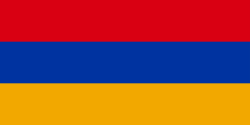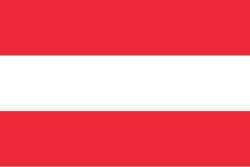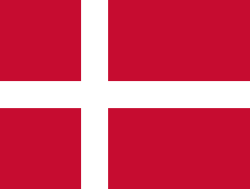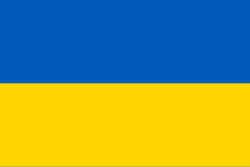General Information
Population
Immigration
Emigration
Working-age population
Unemployment rate
GDP
Refugees, Asylum seekers, IDPs
Citizenship
Territory
Migration Authorities
Responsible Body
The Federal Office for Migration and Refugees (BAMF) under the Federal Ministry of the Interior
Federal Government Commissioner for Migration, Refugees and Integration
Line Ministries
The Federal Ministry of the Interior
Federal Government Commissioner for Migration, Refugees and Integration
Agencies
Description
Germany is a major country of immigration, with population growth driven by sustained net migration. Since 2011, the population has risen by over 3 million people, reaching 83,6 million in 2024, including 12,4 million non-German nationals – roughly one-third each from EU, other European, and non-European countries. Despite deaths exceeding births since 2020, migration has offset population decline, peaking in 2022 at 1,462,089 people, largely due to arrivals from Ukraine.
Germany remains the main destination for migrants in the EU, recording close to 1,7 million arrivals in 2024, down from 1,9 million in 2023, and 2,6 million in 2022. The decline stems mainly from lower net immigration from Afghanistan, Syria, and Türkiye, as well as fewer movements from and to Ukraine.
According to UN DESA, over 16,75 million migrants lived in Germany as of 2024, with the largest groups coming from Poland (1,9 million), Türkiye (1,5 million), Ukraine (1,4 million) and Russia (1,1 million). The 2024 microcensus found that approximately 21,2 million people in Germany had an immigration background, including 6,5 million people who arrived since 2015, mainly from Syria, Romania, Poland, Türkiye and Ukraine. Since 2015, the main reasons for immigration have been asylum and international protection (31%), employment (23%), family reunification (21%) and education (8%).
In 2024, Germany issued 544,987 first residence permits to non-EU nationals, 17,8% fewer than in 2023. Of these, 36% were granted for family reunification and 14% each for employment and education purposes, and the remainder – for other reasons. Family reunification permits in 2024 were predominantly issued to nationals of Syria (23,447) and Kosovo* (14,284).
Germany offers multiple employment opportunities for skilled migrants due to persistent labour shortages across different sectors. Many labour migrants are qualified or highly qualified workers from Türkiye, Kosovo*, Bosnia and Herzegovina, Albania, Serbia, North Macedonia and the US. Nationals of the Western Balkan countries account for approximately 27% of all labour migrants in Germany, largely thanks to the Western Balkans Regulation, which since 2023 has allowed up to 50,000 annual entries for workers regardless of formal qualifications. In 2023, some 41,000 people received an EU Blue Card for the first time, most of them nationals of India, Russia, Türkiye, Iran and China. By the end of that year, 113,500 Blue Card holders were residing in Germany, twice as many as in 2018.
Educational migration remains an important legal pathway to Germany. Between 2022 and 2024, the country issued between 75,000 and 87,000 first study permits each year. In 2024, India remained by far the main country of origin of non-EU students, followed by China, Türkiye, and Morocco. The number of international students enrolled at German universities rose by 85.7%, from 204,644 in the winter semester 2012/2013 to 379,939 in 2023/2024. International students made up 80,9% of all foreign students in 2023/2024. The main countries of origin of foreign students enrolled in the winter semester 2023/2024 were India (49,008), China (38,262), Türkiye (18,084), and Austria (15,379).
Emigration from Germany also remains high. According to UN DESA, 4,297,233 Germans lived abroad as of 2024, the largest communities being in the US (26,5%), Switzerland (8,7%), the UK (6,7%) and Austria (6,2%). In 2024, 1,264,009 people, including 269,986 German nationals, left the country. Most Germans moved to Switzerland (20,695), Austria (13,308), the US (9,307), Spain (8,869), Türkiye (5,203) and the UK (4,450), while foreign nationals primarily left for Romania (176,580), Ukraine (100,226), Poland (90,807) and Bulgaria (59,626). Emigration among German nationals includes both temporary migration for retirement, study, work or family reasons, and long-term migration, particularly to destinations such as the US. In recent years, Poland and Spain have become increasingly popular destinations for retirement migration among Germans.
Germany continues to receive one of the highest numbers of asylum applications in the EU, with 229,751 first-time applications in 2024. Syria, Afghanistan, and Türkiye continued to be the main countries of origin. Following the fall of the Assad regime in December 2024, the processing of asylum applications from Syrians was temporary suspended, affecting tens of thousands of cases. The list of safe countries of origin was gradually expanded and, as of 2024, included Ghana, Senegal, Serbia, North Macedonia, Bosnia-Herzegovina, Albania, Kosovo*, Montenegro, Georgia, and Moldova, leading to fewer applications from North Macedonia and Georgia.
In 2024, Germany was among several EU Member States that reintroduced temporary internal border controls at all land borders. Border rejections rose steadily through 2023-2024, with approximately 1,000 rejections recorded within the first month after September 2024. The share of intercepted individuals who applied for asylum dropped from 45% in 2023 to 23% in the first half of 2024, affecting nationals of countries with high asylum recognition rates, such as Afghanistan, Syria, and Iraq.
In 2024, 249,155 non-EU nationals were found to be illegally present in Germany. The number of issued return orders has been rising steadily from 31,515 in 2021 to 57,075 in 2024, most of which were issued to nationals of Syria, Türkiye and Afghanistan. The number of enforced returns affecting non-EU nationals has also risen, nearly doubling from 7,730 in 2022 to 15,230 in 2024. In August 2024, Germany resumed return of Afghan nationals for the first time since August 2021, limited to those convicted of criminal offences, without legal resident status and subject to return orders. Voluntary return is the preferred option, and Germany encourages migrants to make use of this pathway. Since 1 January 2024, the Federal Office for Migration and Refugees has been responsible for voluntary departures, a function previously managed by IOM. The number of voluntary returns stood at 10,762 in 2023 and at 10,358 in 2024, with most migrants returning to Türkiye (32%), Georgia (14%), North Macedonia (8%), Russia (8%), Albania (5%), and Iraq (5%).
In 2022, German authorities identified 1,532 victims of trafficking, primarily women and children from Ukraine, Nigeria, Venezuela, and Germany, and convicted 196 traffickers, though 63% of primary-charge convictions received lenient sentences. Victims are exploited in sectors such as meat processing, logistics, construction, hospitality, and nursing, as well as in forced begging and criminality. Traffickers originate from Germany, Nigeria, Vietnam, and Eastern Europe. In March 2025, the Federal Government adopted the first National Action Plan to Prevent and Combat Trafficking in Human Beings and Protect Trafficked Persons, focused on four key areas: better protection for victims, stronger law enforcement, expanded prevention efforts, and enhanced cooperation.
In March 2022, Germany granted Ukrainian nationals temporary protection under the EU Temporary Asylum Directive, currently valid until March 2027. As of July 2025, Germany hosted the largest number of beneficiaries in the EU – 1,203,715 people (27.7% of the EU total).
Germany’s migration management is guided by a comprehensive framework of federal agencies, legislation, and policies designed to balance economic, social, and humanitarian objectives. Within this framework, recent reforms have focused on attracting and retaining skilled third-country nationals, including major updates to the Skilled Immigration Act in 2023-2024. The changes aimed at addressing labour shortages across key sectors, such as healthcare, agriculture, and information and communications technology. They eased access to the EU Blue Card, expanded residence permits for skilled workers, and facilitated entry for IT specialists, professional drivers, and foreign nursing assistants. The Western Balkans Regulation was extended and its annual quota doubled. Reforms also simplified the recognition of vocational qualifications, opened new pathways for experienced workers and trainees, and introduced the Opportunity Card, a points-based residence permit for jobseekers. Visa procedures were streamlined to speed up entry.
Germany modernised its Citizenship Law to promote integration and social participation. Effective 27 June 2024, the reform reduces the residence requirement for naturalisation from eight to five years for well-integrated residents, facilitates access for children born in Germany, and recognises the guest worker generation by simplifying language and testing requirements. It also allows multiple citizenships, enabling long-term residents to acquire German nationality without renouncing their original one, while reinforcing commitments to democratic and liberal values.
In recent years, Germany has entered into six migration partnerships, including formal agreements with India, Kenya, Uzbekistan and Georgia, and strengthened bilateral frameworks with Morocco and Colombia – all aimed at promoting skilled labour migration and reducing irregular migration.
Relevant Publications



















































